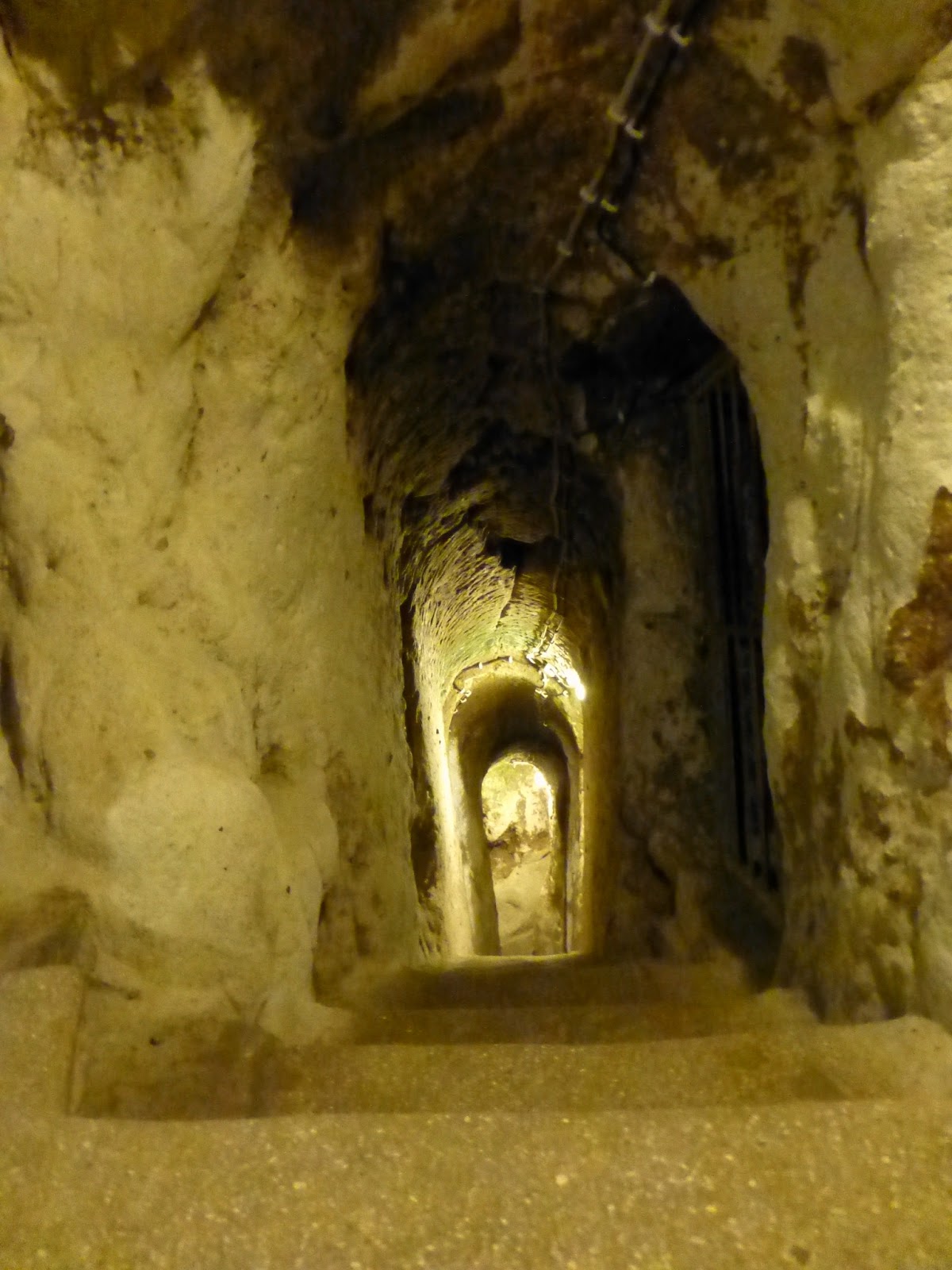Turkey
Cappadocia
Not only does Cappadocia have wild looking geologic formations, but it also has man made ones. We went to visit one of them on a day-long “green” tour. The Derinkuyu Underground City is one of the largest underground cities in Cappadocia. It has eight floor levels that can be visited, with very narrow (and sometimes steep) passages.
 |
| Underground passages in the city |
 |
| They could close off a passage by rolling this rounded stone |
 |
| In this passage they would string up foes |
The passage ways were very narrow and sometimes long and steep. The guide told us that if you suffered from claustrophobia, heart or breathing problems, this was not the place to go. He was right.
Inhabitants started out using the dug out areas for storage. But they expanded them into living areas for protection from sieges by enemies, sometimes living below ground for six months. They had stone-wheeled doors that could be rolled to block passage ways, passages that went nowhere to confuse enemies and much more. There were kitchens, meeting halls, living quarters, eating areas and churches.
The tour then took us to Ilhara Valley, a lush green valley with a river running through it and caves built into the cliffs on either side. Although several churches were visible, we only hiked up to one of them. The Jacinth Church, is a two-story structure with a row of columns carved into the wall on the second floor. The first floor has some colorful frescoes in the nave.
 |
| Starting our descent into Ilhara Valley |
By the way, one of the things we learned about that I found very interesting was that these fresco wall paintings we've been seeing actually employee one of two techniques - fresco and tempera. Fresco (fresh in Italian) is painted on a wet plaster surface while tempera is painted on a dry plaster with paint that is mixed with egg yolk (in this case, they used pigeon eggs).
 |
| Jacinth Church |
 |
| Upper story of Jacinth Church |
At the end of the hike, we had a tasty lunch at a riverside restaurant (I had trout, while Diane had a vegetarian dish). We then headed onward to a huge cave complex that was called the Selime Monastery.
 |
| Trout lunch |
 |
| Lunch by the river |
The Selime Monastery is cut within a huge block of rock, with several churches within it, kitchens, eating areas, passages, halls and more. It was built in the 12th and 13th century by Christian monks. An interesting tidbit that our tour guide told us of is that George Lucas tried to get permission to film parts of Star Wars there, but never got the go-ahead. So his crew took measurements, photos, etc and built a similar fake structure elsewhere.
 |
| Selime Monastery |
 |
| Church in the Open Air Museum |
 |
| View of the Open Air Museum |
Our last day in Cappadocia, Diane and I took it easy but still managed to see some local things around Goreme. We visited the Open Air Museum (with a thousand or more other tourists) and Zemi Valley. In this area we found a small church and later walked through an area that had more unusual rock formations that were very phallic in shape. It was an interesting area and we were one of the few there.
 |
| El Nazar churh in Zemi Valley |
 |
| We got a personal tour from the care-taker at the church |
 |
| View of the rock structures in Zemi Valley |
 |
| Stopping for some fresh OJ |






















No comments:
Post a Comment